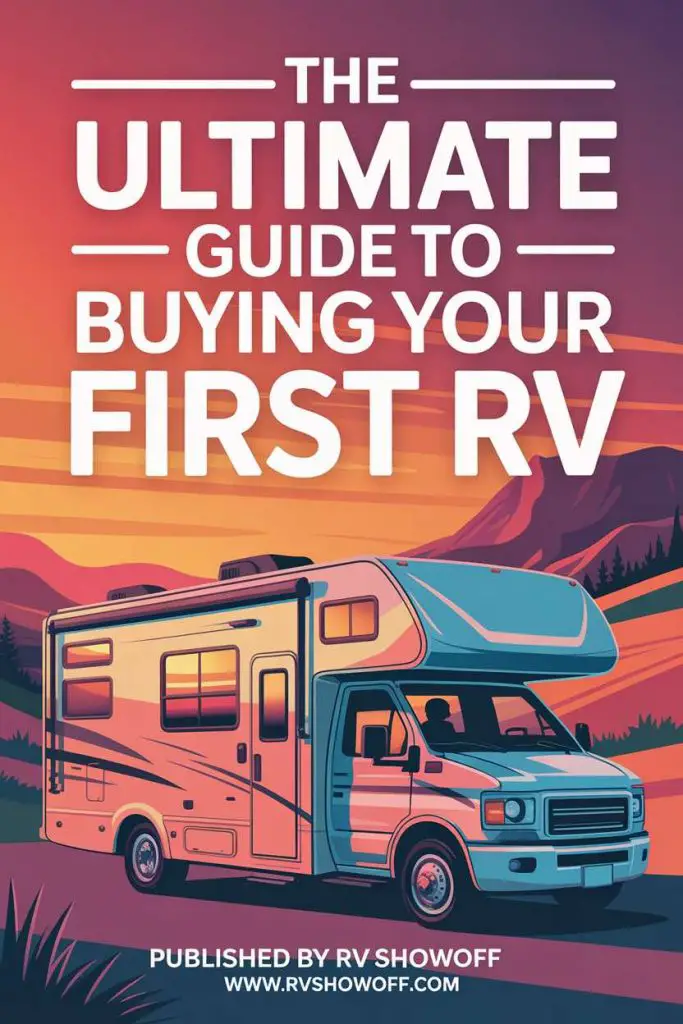Would you like to save this article?
Did you know that financing for recreational vehicles operates more like a mortgage than a typical car loan? This surprising fact means RV buyers can access much longer repayment periods than they might expect. The world of motorhome and camper financing opens up exciting possibilities for adventure seekers.
Lenders typically cap terms at 20 years due to several factors. Recreational vehicles depreciate faster than houses, creating higher risk for financial institutions. These purchases are considered luxury items rather than essential assets.
Recreational vehicle loans stand apart from traditional auto financing. They often feature extended terms that can stretch for many years, making monthly payments more manageable. This unique structure requires less paperwork than home buying but offers similar long-term benefits.
Understanding your financing options is crucial before embarking on this significant purchase. The right loan terms can transform an impossible dream into an affordable reality. This guide will walk you through everything from basic concepts to specific term availability.
With proper knowledge about credit requirements and lender options, you can confidently navigate the RV financing landscape. Finding a solution that fits both your budget and lifestyle becomes much easier. Careful consideration of factors like interest rates ensures you make the best choice for your situation.
Key Takeaways
- RV financing operates differently from standard auto loans
- Loan terms for recreational vehicles can extend much longer than car loans
- Understanding credit score requirements is essential for approval
- Proper financing can make RV ownership more accessible
- Different lenders offer varying terms and conditions
- Monthly payments become more manageable with longer repayment periods
- Researching options helps find the best fit for your budget
Understanding RV Financing Basics
Recreational vehicle financing presents unique opportunities that differ significantly from traditional auto lending. These specialized loans help people acquire their dream mobile lifestyle while managing payments effectively.
What is an RV Loan?
An RV loan functions as a secured financing option where your recreational vehicle serves as collateral. This arrangement gives lenders security while potentially offering you better rates than unsecured alternatives.
The type of vehicle matters greatly in this process. Motorhomes, campers, travel trailers, and fifth wheels each have different financing considerations. Lenders view these purchases as luxury items, which affects their risk assessment.
Importance of Credit Score in RV Financing
Your credit score plays a crucial role in securing favorable financing terms. Higher scores typically unlock better interest rates and more flexible payment options.
The difference between excellent and poor credit can amount to significant savings over the loan’s lifetime. Even if your credit isn’t perfect, improving your score before applying can lead to substantial long-term benefits.
Understanding these fundamentals empowers buyers to ask informed questions and recognize good opportunities. Proper preparation makes the financing journey smoother and more affordable.
How Does the RV Financing Process Work?
Understanding the sequential steps of RV financing helps buyers confidently move from application to hitting the open road. The journey involves clear milestones that make the experience straightforward.
Most lenders follow a similar path when handling recreational vehicle financing. This consistency makes the process predictable and manageable.
Steps from Application to Funding
The typical financing procedure involves four main stages. First, select your preferred unit and review available loan terms.
Next comes the application phase where you provide necessary information. Lenders then evaluate your creditworthiness and make a decision.
Once approved, you’ll sign documents and receive funding. The final step involves completing title and registration paperwork.
Financial institutions assess several factors during approval. Your credit history, annual income, and debt-to-income ratio all play crucial roles.
The vehicle itself also influences terms. Newer models in excellent condition typically qualify for better financing options.
Your final loan amount depends on multiple considerations. The purchase price, your credit profile, and down payment size all affect how much you can borrow.
Working with dealerships often streamlines the process. They have relationships with multiple lenders and can shop rates efficiently.
While the process has several steps, it’s generally faster than home financing. Proper preparation ensures you secure appropriate terms for your budget.
Exploring Loan Terms and Interest Rates
Making informed decisions about camper financing involves balancing monthly payment amounts against long-term interest expenses. The right combination can make your dream vehicle affordable while minimizing total costs.
Fixed vs. Variable Interest Rates
Current interest rates for recreational vehicles typically start around 8% for borrowers with excellent credit. You’ll encounter two main types: fixed and variable rates.
Fixed rates remain constant throughout your entire loan term. This provides predictable monthly payments. Variable rates can fluctuate with market conditions, offering potential savings but also uncertainty.
Even small differences in interest rates create massive cost variations over time. A 5.25% rate on a $200,000 loan totals $323,445 over 20 years. At 9.0%, the same loan costs $431,868—over $108,000 more.
Evaluating Loan Terms for Your Budget
Standard RV loan terms typically range from 10 to 15 years. Shorter options (as brief as 4 years) and longer terms (up to 20 years) are also available.
Shorter terms mean higher monthly payments but significantly less total interest paid. Longer terms offer lower monthly payments but increase your overall cost substantially.
Always ask lenders about additional fees that impact your final loan amount. Use online calculators to experiment with different combinations of rates and terms.
Pros and Cons of Extended Loan Terms
The longest available terms usually range from 15 to 20 years for qualified borrowers. These extended options require excellent credit scores and often apply to newer, higher-value models.
Longer terms offer significantly lower monthly payments, making ownership more accessible. This improved cash flow allows for better budgeting of travel and maintenance expenses.
However, extended repayment periods come with substantial drawbacks. You’ll pay dramatically more interest over the life of the loan. There’s also the risk of owing more than your vehicle’s worth as it depreciates.
| Loan Term | Monthly Payment | Total Interest | Best For |
|---|---|---|---|
| 10 Years | Higher | Lower | Quick ownership |
| 15 Years | Moderate | Medium | Balanced approach |
| 20 Years | Lower | Higher | Budget-conscious |
Consider whether long-term financial commitment aligns with your retirement plans and investment goals. A larger down payment may also help reduce your loan amount while maintaining manageable payments.
Secured vs. Unsecured RV Loans
Choosing the right financing structure is a major decision for any motorhome purchase. The core choice often comes down to whether the loan is secured or unsecured. Each path offers distinct advantages and risks.
Understanding this fundamental difference helps you select the best option for your financial situation.
Benefits and Risks of Secured Loans
Secured loans use the recreational vehicle itself as collateral. This means the lender can repossess the vehicle if payments are missed. In return, they often provide better terms.
These loans typically offer lower interest rates and longer repayment periods. You might qualify for a larger loan amount relative to the purchase price. Some secured loans even allow for interest deductions if the RV qualifies as a second home.
However, the risk of repossession is real. Lenders usually have stricter eligibility requirements. A down payment is often necessary to secure this type of funding.
Understanding Unsecured Loan Options
An unsecured loan functions more like a traditional personal loan. It does not require putting up your vehicle as collateral. Approval relies heavily on your creditworthiness.
The main advantage is speed. Approval and funding are often faster. There is no risk of losing your RV if you face financial hardship.
The trade-off comes with cost. Unsecured loans generally have higher interest rates and shorter terms. This results in higher monthly payments and more fees over the life of the loan.
| Feature | Secured Loan | Unsecured Loan |
|---|---|---|
| Collateral Required | Yes | No |
| Typical Max Term | 20 Years | 7 Years |
| Interest Rates | Lower | Higher |
| Risk to Vehicle | Repossession Possible | No Repossession Risk |
Banks and credit unions offer both options. Compare offers carefully to find the right fit for your budget.
Utilizing RV Loan Calculators and Budgeting Tools
Smart financial planning begins with understanding your potential obligations. An RV loan calculator serves as an essential first step in this journey.
These digital tools are freely available online. They empower prospective buyers to model various financing scenarios before making any commitments.
Estimating Monthly Payments and Total Costs
Using a loan calculator is straightforward. Input the expected loan amount, your anticipated interest rate, and the desired loan term length.
The calculator provides immediate feedback. It shows your estimated monthly payment and the total interest paid over the financing period.
Experimenting with different inputs reveals how adjustments affect affordability. Try varying the down payment or exploring shorter terms. Each change impacts both your monthly budget and long-term costs.
Consider using multiple calculators from different financial institutions. Credit unions and banks often provide their own versions. This cross-referencing helps ensure accuracy in your planning.
Remember that these results are estimates. Final terms depend on credit approval and specific lender requirements. However, this exercise establishes a realistic budget framework.
Start using a calculator early in your shopping process. This proactive approach prevents disappointment by focusing your search on truly affordable options.
Tips for Finding the Best Lenders and Financing Options
Your choice of lender significantly impacts the overall cost and experience of financing a recreational vehicle. Smart comparison shopping helps secure favorable terms.
Comparison Shopping for Lenders
Exploring multiple lending institutions saves money over time. Dealerships maintain relationships with preferred lenders, streamlining the process.
Credit unions often provide competitive rates for members. Online options offer quick funding with diverse products.
Improving Your Credit Score for Better Rates
Lenders heavily weigh credit history when determining rates. A strong credit score unlocks better financing options.
Check your credit report for errors before applying. Paying down existing debts improves your debt-to-income ratio.
Even small score improvements lead to significant savings. Lenders assess employment history and income stability.
Gather documentation like proof of income in advance. This demonstrates financial responsibility to potential lenders.
Conclusion
Finding the right financing solution transforms your travel dreams into achievable monthly payments. While maximum terms typically reach 20 years, these options make RV ownership accessible for various budgets.
Understanding financing basics empowers confident decisions. Your credit profile, vehicle type, and adventure plans all influence the ideal loan structure.
Use calculators and comparison shopping to secure the best terms. Consider total costs over time, not just monthly payments.
With proper planning, you can find financing that opens a world of exploration. This commitment may also become a rewarding investment in family memories and freedom.
Take that first step toward your motorhome or camper adventure today. The journey itself becomes part of the excitement.







